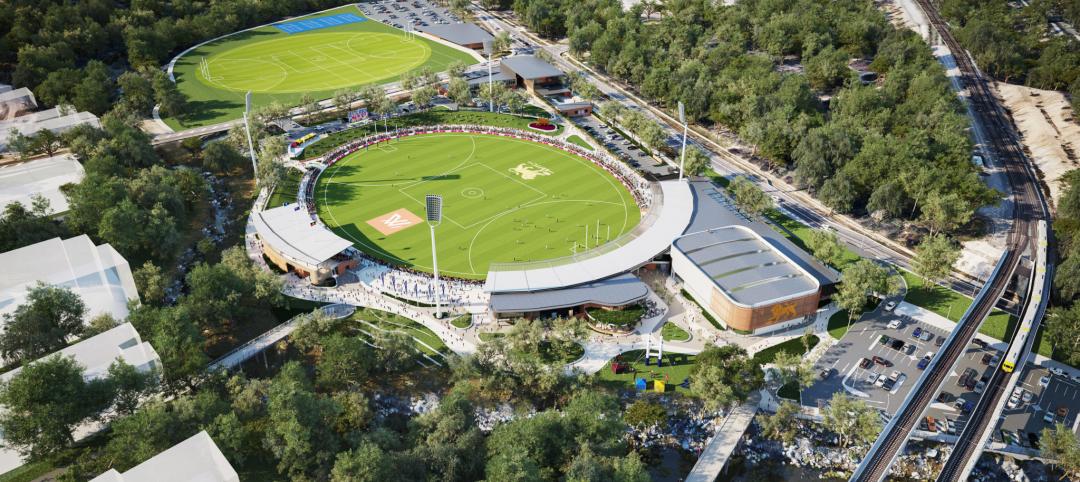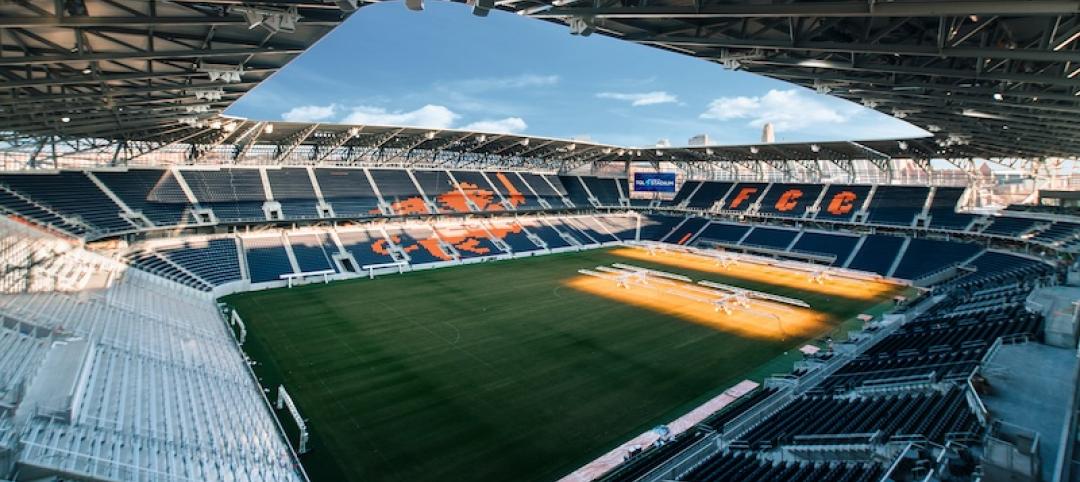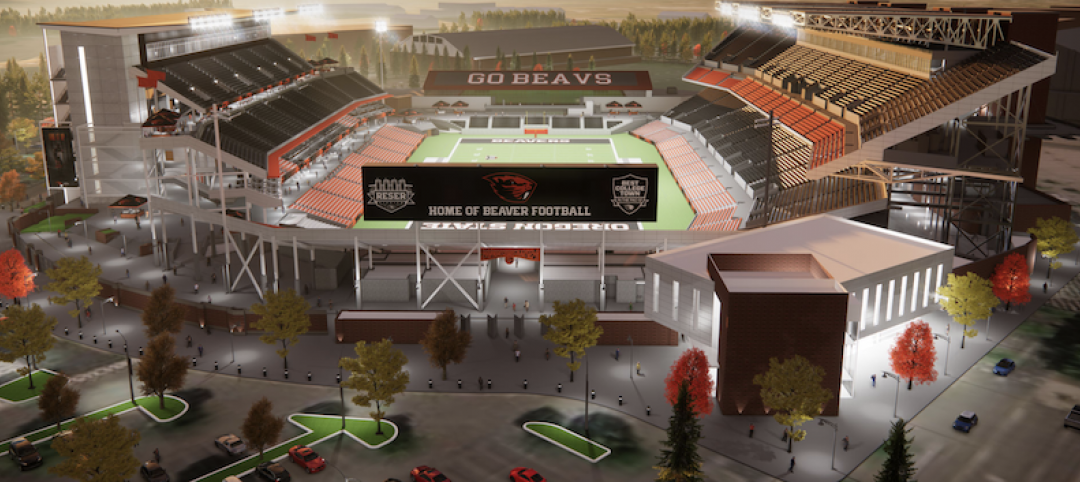This week, a building team that includes Clark Construction Group topped out the 35,000-seat-capacity Aztec Stadium at San Diego State University.
The structural steel operations for the $310 million stadium were completed 11 months after construction commenced. Once the stadium opens in September 2022, it is expected to host more than 300 events annually, including collegiate and professional football and soccer games, concerts, and cultural events.
The facility, which project architect Gensler Sports designed to meet LEED Gold certification, is the first phase of SDSU Mission Valley, a mixed-used, medium-density campus innovation district that will include transit, 95,000 sf of retail, 4,000 residences and 400 hotel rooms, and more than 80 acres of parks and recreation space. This district is projected to have a $3.1 billion economic impact on San Diego, create 17,000 jobs, and increase the university’s enrollment by 15,000.
What had been Qualcomm Stadium was demolished—after the San Diego Chargers football team relocated to Los Angeles—to make way for SDSU Mission Valley. In June 2020, the university agreed to pay the city $88 million to acquire 135 acres of Mission Valley for this district.
CREATED 6,500 CONSTRUCTION JOBS
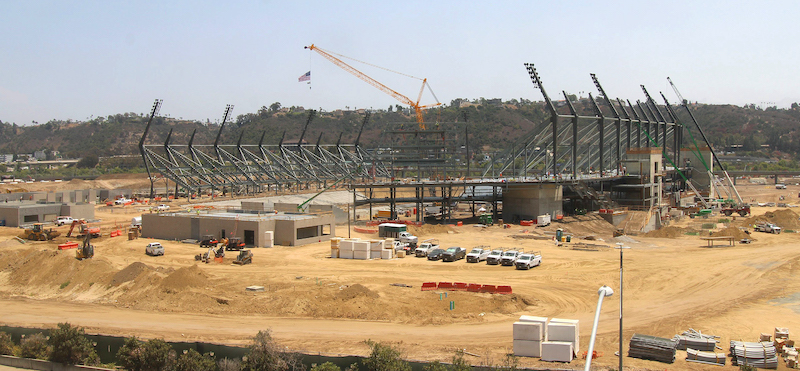
The Aztec Stadium is supported by 2,500 steel beams. Image: Clark Construction Group.
Some 30,000 cubic yards of concrete were poured for Aztec Stadium, which is supported by 2,500 steel beams. On average, 300 craft workers representing 15 different trade partners were on-site daily. The construction of the stadium provided nearly 6,500 construction jobs in total. In aggregate, local firms—including 35 San Diego-based businesses—were awarded $250 million in construction contracts.
Signature design elements that create connectivity to the field include the venue’s concourse level “neighborhoods,” designed to reflect the city’s diverse communities, and unique standing-room-only “piers” that jut out over stadium seating and conjure a coastal vibe.
Related Stories
Resiliency | Jun 24, 2021
Oceanographer John Englander talks resiliency and buildings [new on HorizonTV]
New on HorizonTV, oceanographer John Englander discusses his latest book, which warns that, regardless of resilience efforts, sea levels will rise by meters in the coming decades. Adaptation, he says, is the key to future building design and construction.
Sports and Recreational Facilities | Jun 16, 2021
Populous designs 9,000-seat stadium and training center for the Brisbane Lions
The project will include fields for public use.
Digital Twin | May 24, 2021
Digital twin’s value propositions for the built environment, explained
Ernst & Young’s white paper makes its cases for the technology’s myriad benefits.
Sports and Recreational Facilities | May 17, 2021
Indoor volleyball and basketball complex set for St. Louis
The project will be the largest youth volleyball and basketball facility in St. Louis.
Sports and Recreational Facilities | May 11, 2021
Total Quality Logistics Stadium completes in Cincinnati
Populous designed the project.
Sports and Recreational Facilities | Apr 27, 2021
Populous completes Phase II of renovations at Georgia Tech’s Mac Nease Baseball Park at Russ Chandler Stadium
The project includes a new, year-round elite training facility.
Sports and Recreational Facilities | Apr 9, 2021
AdventHealth Training Center breaks ground in Orlando
HOK designed the project.
Sports and Recreational Facilities | Mar 26, 2021
Populous and SRG Partnership selected to transform Oregon State University’s Reser Stadium
Populous has recently release renderings of the project.
Market Data | Feb 24, 2021
2021 won’t be a growth year for construction spending, says latest JLL forecast
Predicts second-half improvement toward normalization next year.
AEC Tech | Dec 17, 2020
The Weekly show: The future of eSports facilities, meet the National Institute for AI in Construction
The December 17 episode of BD+C's The Weekly is available for viewing on demand.


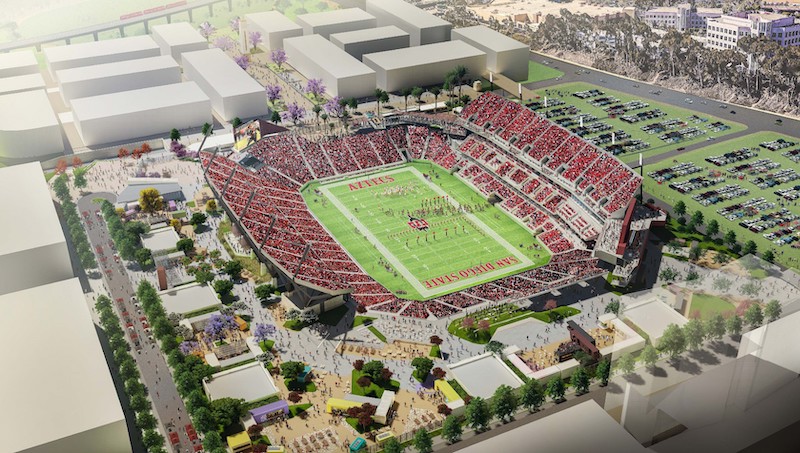
![Oceanographer John Englander talks resiliency and buildings [new on HorizonTV] Oceanographer John Englander talks resiliency and buildings [new on HorizonTV]](/sites/default/files/styles/list_big/public/Oceanographer%20John%20Englander%20Talks%20Resiliency%20and%20Buildings%20YT%20new_0.jpg?itok=enJ1TWJ8)
